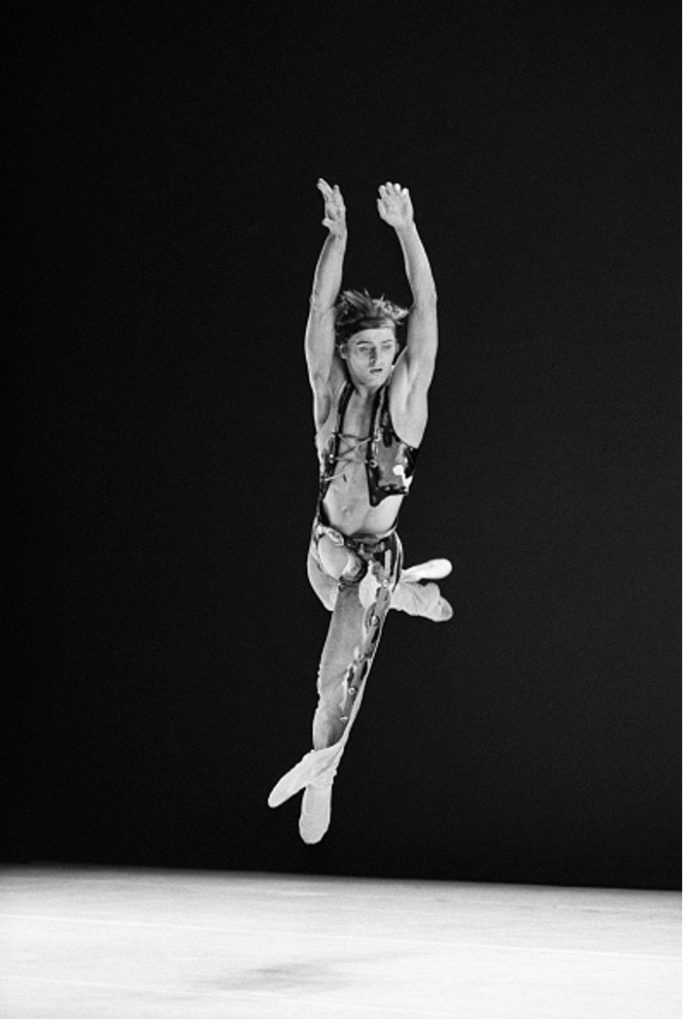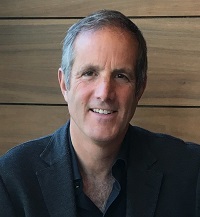 Greetings from C-IP2 Faculty Director Sean O’Connor
Greetings from C-IP2 Faculty Director Sean O’Connor
As we move further into spring of 2022, we are simultaneously emerging––gradually and hopefully––from the global health crisis of these past two years. In-person gatherings and events are steadily resuming in the Washington, D.C., area and in many places around the world, and it’s wonderful to share the same spaces once again with friends and colleagues, old and new. Early last December, C-IP2 held our first large-scale in-person event since 2020 with our hybrid conference on Intellectual Property and Innovation Policy for 5G and the Internet of Things. Excepting January 2022’s Edison Fellowship meeting and precautions taken against the Omicron variant, we have been moving ahead with primarily in-person programming for 2022, and we hope you will keep an eye on our website and email communications for opportunities to join us and engage with us. In the meantime, our Spring 2022 Progress Report below (spanning December 2021 through February 2022) will catch you up on the activities and scholarship of C-IP2 and affiliates in recent months, and we continue to wish you good health in the months to come.
C-IP2 Hosted & Co-Hosted Events
Academic ConferenceOn December 2-3, 2021, C-IP2 hosted an academic conference on 5G and Beyond: Intellectual Property and Competition Policy in the Internet of Things. The event was both held in person and livestreamed from George Mason University, Antonin Scalia Law School, and featured as speakers many of the contributors for the upcoming corresponding book, 5G and Beyond: Intellectual Property and Competition Policy in the Internet of Things, which is being co-edited by Professors Jonathan Barnett and Sean O’Connor and has been accepted for publication by Cambridge University Press (Forthcoming 2022). Thomas Edison Innovation Law and Policy FellowshipOn January 20-21, 2022, C-IP2 hosted the third and final meeting of the 2021-2022 Thomas Edison Innovation Law and Policy Fellowship. The Edison Fellows presented substantially revised drafts of their research papers and received feedback from Distinguished Senior Commentators and other Fellows. The plan is for Fellows to submit their final papers to journals for the March submission period.
News & Speaking Engagements
We are pleased to welcome and announce the scholars and practitioners who have joined C-IP2 over the course of December 2021 through February 2022: Tun-Jen Chiang as a Senior Scholar; Gregory Dolin, John Liddicoat, and Amy Semet as Scholars; and Theo Cheng, Stephanie Semler, and Eric Solovy as Practitioners in Residence. The Antonin Scalia Law School winter graduation was held on December 16, 2021, at Eagle Bank Arena in Fairfax, VA. C-IP2’s December 2021 5G conference was mentioned by ThinkBRG, which noted BRG Executive Chairman David J. Teece’s participation in a panel on “Global Differences in Antitrust Treatment of SEPs and SSOs.” C-IP2 was mentioned in a February story on Broadway World, highlighting their upcoming April 2022 event with GRAMMY Award-winning composer Maria Schneider, co-hosted with George Mason University Center for the Arts. In February, Jeffrey E. Depp—a 2022-2023 Thomas Edison Innovation Law and Policy Fellow with C-IP2 and PhD student at the University of Pittsburgh Graduate School of Public and International Affairs—received the Volunteer of the Year Award from AUTM. Professor Sean M. O’Connor posted his book chapter “AI Replication of Musical Styles Points the Way to an Exclusive Rights Regime,” which is part of the upcoming book Research Handbook on Intellectual Property and Artificial Intelligence (Edward Elgar 2022 Forthcoming), edited by Dr. Ryan Abbott. Sandra Aistars (C-IP2 Senior Fellow for Copyright Research and Policy & Senior Scholar; Founding Director, Arts & Entertainment Advocacy Clinic; Clinical Professor of Law, George Mason University Antonin Scalia Law School)
-
- Served as a commentator at the University of Akron IP Scholars Forum on December 9-10, 2021
- Scholarly contributions to advancing copyright law cited in a December 16 IPWatchdog article on The Year in Copyright: From Google v. Oracle to the Takings Clause by Devlin Hartline, Legal Fellow at the Hudson Institute’s Forum for Intellectual Property in Washington, D.C. (Items cited include: March 27, 2018, organizing and drafting IP scholars briefing in a decade of briefing culminating before the Supreme Court in Google LLC v Oracle America, Inc. opinion; a May 9, 2019, IPWatchdog article with the Copyright Alliance’s Kevin Madigan on the CASE Act; 2018 scholarly article on a small copyright claims tribunal; and research and analysis cited in the August 2021 U.S. Copyright Office’s Copyright and State Sovereign Immunity report)
- On January 13, participated in a Copyright Alliance meeting to discuss the December 30 CASE Act notice of proposed rulemaking (NPRM)
- In February, along with the Arts & Entertainment Advocacy Clinic, filed initial and reply comments by IP scholars regarding Law Student and clinic participation in representation of individuals and small businesses before the CCB pursuant to the CASE Act
- Quoted in a February 11 article on The Verge, “Artists Are Playing Takedown Whack-A-Mole To Fight Counterfeit Merch”
Jonathan Barnett (C-IP2 Senior Fellow for Innovation Policy & Senior Scholar; Torrey H. Webb Professor of Law, USC Gould School of Law)
-
- Helped to organize and participated in C-IP2’s December conference on 5G and IP as a co-editor with Professor Sean O’Connor on the upcoming corresponding book, 5G and Beyond: Intellectual Property and Competition Policy in the Internet of Things
- On January 19, presented at a webinar hosted by the 4iP Council (Jan. 20, 2022), “Solution in Search of a Problem: The Economic Case Against Licensing Negotiation Groups in the Internet of Things”
- On February 4, co-authored and submitted comments with fellow scholars of law, economics, and business regarding the Draft USPTO, NIST, & DOJ Policy Statement on Licensing Negotiations and Remedies for Standard Essential Patents Subject to Voluntary F/RAND Commitments
- Mentioned in a February 7 Foss Patents blogpost, “In its replies to Apple’s public interest statements, Ericsson points the ITC to Apple’s 30% app tax and market definition in Epic Games case”
Chief Judge Susan G. Braden (Court of Federal Claims (Ret.); C-IP2 Jurist in Residence)
-
- On December 8, attended the USPTO Private Patent Advisory Committee Meeting on Congressional Legislation
- On January 19, took part in Designated Chair of Artificial Intelligence Tools and Information Technology Subcommittee, USPTO Private Patent Advisory Committee
- On January 27, joined Meeting with Matthew Such, Group Leader, Patent Product Line Lead, Office of Patent Information Management, USPTO re AI priorities for 2022
- On January 31, completed Working Draft of “Section 1498 (a): NOT A RX FOR LOWER PHARMA PRICES” (out for academic comment), which was co-authored with Joshua Kresh, C-IP2 Managing Director
- In February, was appointed to the 2022 National Vaccine Law Conference Committee
- On February 8, attended the USPTO Private Patent Advisory Committee Innovation, Expansion, and Outreach Subcommittee Meeting
- On February 9, attended the Executive Session of USPTO Private Patent Advisory Committee
- On February 10, attended the USPTO Private Patent Advisory Artificial Intelligence Tools and Information Technology Subcommittee Meeting
- On February 25, met with the Lead Business Development SAS US Alliances/Channels Team
Terrica Carrington (C-IP2 Practitioner in Residence; VP, Legal Policy and Copyright Counsel, Copyright Alliance)
-
- Helped organize and co-host a December 6 event (sponsored by the Copyright Alliance and the U.S. Chamber of Commerce’s Global Innovation Policy Center and Equality of Opportunity Initiative) titled “A Conversation on Diversity and Inclusion in Copyright,” where speakers and attendees discussed how to increase participation from underrepresented communities in the copyright sector industries and professions
- Nominated in January 2022 for the G. Hamilton Loeb Award for Pro Bono Excellence in recognition of her work to support the arts
- Quoted in a January 11 article by Franklin Graves on Tubefilter, “Here Are The Legal Issues Affecting Content Creators in 2022”
Theo Cheng (C-IP2 Practitioner in Residence; Arbitrator and Mediator, ADR Office of Theo Cheng LLC; Adjunct Professor, New York Law School)
-
- In December, his article “Conducting Remote Mediations During the Pandemic” was published in the New York State Bar Association Trial Lawyers Digest
- On December 22, gave a two-hour presentation on “Diversity, Implicit Bias & Cross-Cultural Skills in ADR” to the court staff at the Supreme Court of New York, Appellate Division, Second Department
- Joined C-IP2 as a Practitioner in Residence in January
- On January 11, was a co-presenter on a program entitled “Nonparty Discovery in U.S. Arbitrations: The Legal Challenges & Differences from Litigation” for the New York State Bar Association that was sponsored by the Dispute Resolution Section Domestic Arbitration Committee
- On February 23, moderated a panel entitled “Diversity, Inclusion and Elimination of Bias in Evidentiary Analysis and Decision Making.” The panel was part of an all-day program held by the New York County Lawyers Association for New York’s Part 137 Fee Disputes and Conciliation Arbitration Training Program
Tun-Jen Chiang (C-IP2 Senior Scholar; Professor of Law, George Mason University, Antonin Scalia Law School)
-
- Joined C-IP2 as a Senior Scholar in January
Eric Claeys (C-IP2 Senior Fellow for Scholarly Initiatives & Senior Scholar; Professor of Law, George Mason University Antonin Scalia Law School)
-
- On January 20-23, co-organized and participated in the third and final meeting of the 2021-2022 Thomas Edison Innovation Law and Policy Fellowship
Gregory Dolin (C-IP2 Scholar; Associate Professor of Law, University of Baltimore School of Law)
-
- Joined C-IP2 as a Scholar in January
John F. Duffy (C-IP2 Senior Scholar; Samuel H. McCoy II Professor of Law and Paul G. Mahoney Research Professor of Law, University of Virginia School of Law)
-
- On January 20-21, served as a Distinguished Senior Commentator during the third and final meeting of the 2021-2022 Thomas Edison Innovation Law and Policy Fellowship
Tabrez Ebrahim (C-IP2 Scholar; Associate Professor, California Western School of Law)
-
- Professor Ebrahim will be joining Lewis & Clark Law School and the Center for Business Law and Innovation [Lewis & Clark Law School, Leiter Law School] this coming Fall 2022
- In January, gave a presentation entitled “Datafication & Data Governance at the Patent Office” at the virtual AALS Annual Meeting: New Voices in Intellectual Property Law Scholarship
- Joined a research project with the University of Arizona’s Center for Quantum Networks (January 2022-Present) as a Fellow (Thrust 4: Societal Impact of the Quantum Internet)
- On February 4, presented on a panel entitled Data Privacy & Democracy at the Lewis & Clark Law School’s 3rd Annual Data Privacy Forum
- On February 19, presented a draft article entitled An Information Theory of Data Governance at the Patent Office as part of the 19th Works in Progress for Intellectual Property Scholars Colloquium (WIPIP 2022), co-hosted by St. Louis University School of Law and University of Missouri School of Law
Jon M. Garon (C-IP2 Senior Scholar; Professor of Law and Director of the Intellectual Property, Cybersecurity, and Technology Law program, Nova Southeastern University Shepard Broad College of Law)
-
- In December, served as Moderator and Program Coordinator for Business Law Basics – Lost in Tokenization: Legal Implications of Non-Fungible Tokens on Finance, Art, Property, and Culture, American Bar Association Business Law Section [This 90-minute CLE is free-on-demand for all ABA Business Law Section members]
- In December, developed a CLE program which he moderated entitled Business Law Basics – Lost in Tokenization: Legal Implications of Non-Fungible Tokens on Finance, Art, Property, and Culture, American Bar Association Business Law Section
- In January, presented Legal Strategies for the Metaverse and the Evolving Media Landscape (American Bar Association, Business Law Section Cyberspace Law Committee, Cyberspace Law Institute)
- Has contracted to publish a new book entitled Teaching and Learning in the Metaverse: Using Online Platforms, Games, NFTs, and Blockchain in Education with Rowman & Littlefield (2023)
- On February 22, gave a virtual presentation on Understanding the Evolving Media Landscape for Nova Southeastern University’s Lifelong Learning Institute
- On February 22, received a “Top Ten” Download from SSRN.com for six electric journals. His draft article, Legal Implications of a Ubiquitous Metaverse and a Web3 Future, is available at SSRN
- Latest book, Parenting for the Digital Generation – The Parent’s Guide to Digital Education and the Online Environment (Rowman & Littlefield 2022), is available for order both in stores and online [Rowman & Littlefield, Amazon, Barnes & Noble]
Christopher Holman (C-IP2 Senior Fellow for Life Sciences & Senior Scholar; Professor of Law, University of Missouri-Kansas City School of Law)
-
- Spoke at the FDA-PTO Roundtable at the George Washington University Law School on December 21
- On January 20-21, served as a Distinguished Senior Commentator during the third and final meeting of the 2021-2022 Thomas Edison Innovation Law and Policy Fellowship
- On January 21, spoke as a panelist at the FDA-PTO Roundtable on patents and pharmaceutical pricing at the George Washington University Law School
- On January 28, spoke on a panel entitled “FDA and Patents? FDA’s Letter to the USPTO and Possible Next Steps” as part of the Food, Drug & Cosmetic Law Section at the New York State Bar Association Annual Meeting
- On February 18, presented a draft article entitled Evolution of the Antibody Patent as part of the 19th Works in Progress for Intellectual Property Scholars Colloquium (WIPIP 2022), co-hosted by St. Louis University School of Law and University of Missouri School of Law
Camilla A. Hrdy (C-IP2 Scholar; Research Professor in Intellectual Property Law, University of Akron School of Law)
-
- Article “Abandoning Trade Secrets” (with Mark A. Lemley), 72 Stan. L. Rev. 1 (2021) was cited by a U.S. District court in Providence Title Co. v. Truly Title, Inc., et al., No. 4:21-CV-147-SDJ, 2021 WL 2701238 (E.D. Tex. July 1, 2021)
- Article “The Trade Secrecy Standard for Prior Art” (with Sharon K. Sandeen), 70 Am. U. L. Rev. 1269 (2021) was selected as the featured patent law article for American University Law Review’s annual Federal Circuit Symposium Issue
- On December 10, new article, “The Value in Secrecy,” was identified as one of the best works of recent scholarship relating to intellectual property law by Jotwell: The Journal of Things We Like (Lots) [SSRN]
- On December 13-14, attended The Sedona Conference WG12 Annual Meeting 2021 in Phoenix, AZ. Prof. Hrdy is a Member of Brainstorming Group on “What Can and Cannot Be a Protectable Trade Secret?”
- Authored a January 12 post on the Written Description blog entitled “Jessica Litman: Who Cares What Edward Rogers Thought About Trademark Law?”
- Mentioned in a February 10 Law360 article, “Hytera Indictment May Set New Path For Trade Secrets Cases”
Dmitry Karshtedt (C-IP2 Scholar; Associate Professor of Law, The George Washington University Law School)
-
- Co-authored a December 22 amicus brief on Amgen Inc. v. Sanofi
- Quoted in a January 12 BloombergLaw article by Ian Lopez, Hikma Drug Label Win Still Leaves Generics on Hook for Liability
- Spoke at the FDA-PTO Roundtable at the George Washington University Law School on January 21
- Quoted in a January 27 Law360 article by Ryan David, Breyer’s Rulings Shaped By Wariness Of Intellectual Property
- On February 18, presented a draft article entitled An Information Theory of Data Governance at the Patent Office as part of the 19th Works in Progress for Intellectual Property Scholars Colloquium (WIPIP 2022), co-hosted by St. Louis University School of Law and University of Missouri School of Law
- Placed in-progress paper, Pharmaceutical Patents and Adversarial Examination in The George Washington Law Review, forthcoming 2023
Hon. Prof. F. Scott Kieff (C-IP2 Senior Scholar; Fred C. Stevenson Research Professor, The George Washington University Law School)
-
- Gave the keynote address at C-IP2’s December conference on 5G and IP as a contributor to the upcoming corresponding book, 5G and Beyond: Intellectual Property and Competition Policy in the Internet of Things
Dr. John Liddicoat (C-IP2 Scholar; Senior Research Associate and Affiliated Lecturer, Faculty of Law, University of Cambridge)
-
- Joined C-IP2 as a Scholar in January 2022
- On January 20-21, participated as an Edison Fellow during the third and final meeting of the 2021-2022 Thomas Edison Innovation Law and Policy Fellowship
- Chaired a February 10 seminar hosted by Cambridge University’s Centre for Intellectual Property and Information Law (CIPIL), presented by speaker David Webb (Herbert Smith Freehills), and entitled FRAND: Where are we: And where are we going? (read more here and click here to view the recording on YouTube)
Joshua Kresh (C-IP2 Managing Director)
-
- On January 20-21, co-organized and participated in the third and final meeting of the 2021-2022 Thomas Edison Innovation Law and Policy Fellowship
- On January 31, completed Working Draft of “Section 1498 (a): NOT A RX FOR LOWER PHARMA PRICES” (out for academic comment), which was co-authored with Judge Susan G. Braden
Daryl Lim (C-IP2 Senior Scholar; Professor of Law and the Director of the Center for Intellectual Property (IP), Information & Privacy Law, University of Illinois Chicago School of Law)
-
- On December 9, was a Discussant during the virtual Fordham IP Institute Global IP Roundtable
- On December 14, was a Moderator during the virtual 4th edition of the Paris conference on Standard Essential Patents (SEPs) and FRAND (Session 1)
- Was a Speaker for “Can Computational Antitrust Succeed?” during the virtual Computational Antitrust: Exploring Antitrust 3.0 conference at the Stanford Center for Legal Informatics, December 13-15, 2021
- On December 17, was a Discussant/Commentator at the Centre for Financial Regulation and Economic Development (CFRED) at the Chinese University of Hong Kong Law (CUHK Law) and the Center for Law and Intellectual Property at Texas A&M University School of Law’s workshop on Anti-suit Injunctions and FRAND Litigation in China
- In a December 28 IPWatchdog piece, provided his choices for “the biggest moments in IP for 2021”
- Mentioned in a February 3 article by Penn State, “Penn State Dickinson Law announce new resident faculty appointment”
- On February 8, spoke on “What can Copyright Law Learn from Design Law?” during the virtual ABA-IPL Design Rights Committee Fireside Chat
Hina Mehta (C-IP2 Practitioner in Residence; Director, Office of Technology Transfer, George Mason University)
-
- Attended the February 20-23 Association of University Technology Managers Conference where she served as instructor for a half day professional development course on Negotiations
Emily Michiko Morris (C-IP2 Senior for Life Sciences and Scholar; C-IP2 2021-2022 Edison Fellow; David L. Brennan Endowed Chair, Associate Professor, and Associate Director of the Center for Intellectual Property Law & Technology, University of Akron School of Law)
-
- Spoke at the FDA-PTO Roundtable at the George Washington University Law School on December 21
- On January 20-21, participated as an Edison Fellow during the third and final meeting of the 2021-2022 Thomas Edison Innovation Law and Policy Fellowship
- Spoke at the FDA-PTO Roundtable at the George Washington University Law School on January 21
Sean M. O’Connor (C-IP2 Faculty Director; Faculty Director, Innovation Law Clinic; Professor of Law, George Mason University Antonin Scalia Law School)
-
- On December 1, gave an LLC presentation with Antonin Scalia Law School’s Dean Ken Randall to George Mason University’s Green Machine
- Helped to organize and spoke at C-IP2’s December conference on 5G and IP as a co-editor with Professor Jonathan Barnett on the upcoming corresponding book, 5G and Beyond: Intellectual Property and Competition Policy in the Internet of Things
- On January 20-21, co-organized and participated in the third and final meeting of the 2021-2022 Thomas Edison Innovation Law and Policy Fellowship
- On January 23, gave a virtual Texas A&M IP Management talk
- On January 31, spoke at a seminar as part of the Loyola Law School’s Intellectual Property and Information Law Speaker Series at Loyola Marymount University in Los Angeles, California
Kristen Jakobsen Osenga (C-IP2 Senior Scholar; Austin E. Owen Research Scholar and Professor of Law, University of Richmond School of Law)
-
- Spoke at C-IP2’s December conference on 5G and IP as a contributor to the upcoming corresponding book, 5G and Beyond: Intellectual Property and Competition Policy in the Internet of Things
- On January 5, served as a senior commentator in an IP Works in Progress session for a paper by Tabrez Ebrahim at the Association of American Law Schools (AALS) Annual Meeting
- On January 7, served a moderator for a Federalist Society Works in Progress Mini-Conference panel
- On January 25, participated in a Hudson Institute roundtable about national security & IP
- On February 4, was cited in and submitted comments with fellow scholars of law, economics, and business regarding the Draft USPTO, NIST, & DOJ Policy Statement on Licensing Negotiations and Remedies for Standard Essential Patents Subject to Voluntary F/RAND Commitments
- Filed a brief with Professors Jonathan Barnett, Richard Epstein, and Adam Mossoff to the International Trade Commission about the importance of exclusionary order for SEPs and public interest in the Ericsson v. Apple case. Filing was mentioned in a February 7 Foss Patents blogpost, “In its replies to Apple’s public interest statements, Ericsson points the ITC to Apple’s 30% app tax and market definition in Epic Games case”
- Spoke on a February 16 panel entitled, “Theory to Doctrine: Should Specific Antitrust Doctrines or Cases Be Revisited in the Digital Age?” The panel was part of the Big Tech and Antitrust Conference, and sponsored by the Gibbons Institute of Law, Science & Technology, and the Institute for Privacy Protection at Seton Hall Law School.
- On February 18, participated in the 15th Annual Evil Twin Debate against Jorge Contreras (Presidential Scholar and Professor of Law, University of Utah S.J. Quinney College of Law). Profs. Contreras and Osenga debated “Efficient Infringement: Awful or Awesome?”
Mark F. Schultz (C-IP2 Senior Scholar; Goodyear Tire & Rubber Company Chair in Intellectual Property Law, University of Akron School of Law; Director, Center for Intellectual Property Law and Technology)
-
- On December 2, participated in the Global Trade and Innovation Policy Alliance’s 2021 Global Trade and Innovation Policy Alliance Annual Summit in Washington, D.C., where he spoke on trends in national regulation of Video on Demand Streaming Services worldwide
- On December 16, spoke in a MacDonald-Laurier Institute (Canada) webinar regarding the appropriate regulatory and IP policies to avoid supply chain disruptions in the manufacturing and distribution of vaccines for the next pandemic
- Spoke in January 2022 at an event hosted by UC Berkeley and the Sunwater Institute on empirical methods for measuring the strength of national IP systems
- On January 20-21, served as a Distinguished Senior Commentator during the third and final meeting of the 2021-2022 Thomas Edison Innovation Law and Policy Fellowship
- On January 28-29, participated as a commentator at the Three Rivers IP Colloquium
- On February 8, spoke at a webinar entitled “Extending Bio-manufacturing Networks in Emerging Regions,” sponsored by Bobab (an Africa-based NGO) and the Innovation Council (a Swiss NGO), about creating an enabling environment for manufacturing vaccines and therapeutics in Africa and other emerging regions
- Quoted in a February 11 article on The Verge, “Artists Are Playing Takedown Whack-A-Mole To Fight Counterfeit Merch.”
- On February 18, spoke at an online roundtable sponsored by the National Law University of Bangalore and the Government of India about drafting a trade secret statute for India
Amy Semet (C-IP2 Scholar; Associate Professor, University at Buffalo School of Law)
-
- Joined C-IP2 as a Scholar in January 2022
Stephanie M. Semler (C-IP2 Practitioner in Residence; Adjunct Professor, George Mason University, Antonin Scalia Law School; Associate Attorney, Venable LLP; Supervising Attorney, Arts & Entertainment Advocacy Clinic)
-
- Joined C-IP2 as a Practitioner in Residence in January 2022
Eric M. Solovy (C-IP2 Practitioner in Residence; Partner, Sidley Austin LLP)
-
- In February, joined C-IP2 as a Practitioner in Residence
Scholarship & Other Writings
Jonathan Barnett, Does the Market Know Something the FTC Doesn’t?, Truth on the Market (February 10, 2022) Jonathan Barnett, The Economic Case Against Licensing Negotiation Groups in the Internet of Things (January 10, 2022). USC CLASS Research Paper Series No. CLASS22-1, USC Legal Studies Research Paper Series No. 22-1 [SSRN] Jonathan Barnett, How Not to Promote US Innovation (February 18, 2022), Truth on the Market Jonathan Barnett, Time To Nix Antitrust Policies That Fueled Blocked Nvidia Deal (February 10, 2022), Law360 Terrica Carrington, Copyright Office Activities in 2021: A Year In Review, Copyright Alliance (Jan. 11, 2022) Jon M. Garon, Book Chapter, “Legal Issues for Database Protection in the US and Abroad,” in Bioinformatics Law: Legal Issues for Computational Biology in the Post-Genome Era, ed. Jorge Contreras (Edward Elgar Publishing 2d Ed. 2021) (December 2021) Thomas Grant and Scott Kieff, 3 Safe Passages To Avoid Sanctions Double Binds, Law360 (February 9, 2022) Christopher M. Holman, Is the Chemical Genus Claim Really “Dead” at the Federal Circuit?: Part I, 41 Biotechnology Law Report 4 (2022) Camilla Hrdy, Jessica Litman: Who Cares What Edward Rogers Thought About Trademark Law?, Written Description (Jan. 12, 2022) Camilla Alexandra Hrdy, The Value in Secrecy (August 2, 2021). Fordham Law Review, Vol. 91, 2022 Dmitry Karshtedt and Mark A. Lemley and Sean B. Seymore, The Death of the Genus Claim, 35 Harv. J.L. & Tech. 1 (Fall 2021) [SSRN] Daryl Lim, AI, Equality, and the IP Gap, Southern Methodist University Law Review (Forthcoming 2022) Daryl Lim, Antitrust’s AI Revolution, Tennessee Law Review (Forthcoming 2022) Daryl Lim, Confusion, Simplified, Berkeley Technology Law Journal (Forthcoming 2022) Daryl Lim, Trademark Confusion Revealed: An Empirical Analysis, American University Law Review (Forthcoming 2022) Adam Mossoff and Jonathan Barnett, Comment of Legal Academics, Economists, and Former Government Officials on Draft Policy Statement on the Licensing and Remedies for Standard Essential Patents (February 4, 2022) Sean M. O’Connor, “AI Replication of Musical Styles Points the Way to An Exclusive Rights Regime” (February 15, 2022). Research Handbook on Intellectual Property and Artificial Intelligence, Ryan Abbott ed. (Edward Elgar 2022 Forthcoming) Kristen Osenga, More Antitrust Scrutiny Of Pharma Won’t Help Patient Health (February 16, 2022), Law360 Eric A. Priest, The Future of Music Copyright Collectives in the Digital Streaming Age (December 23, 2021), Columbia Journal of Law & the Arts, Vol. 45, 2021 (published February 2022) Philip Stevens and Mark Schultz, The role of intellectual property rights inpreparing for future pandemics, Geneva Network (February 28, 2022) Raju Narayana Swamy, COVID-19 Pandemic: Should Nations Resort to Compulsory Licensing of Drugs and Vaccines? An Analysis of the Effect of Such Pervasive Steps and Non-Market Price-Setting on the Economics and Political Economy of Creative Industries (October 26, 2021) [SSRN, LexForti] Shine (Sean) Tu and Christopher M. Holman, Technology Changes Drive Legal Changes for Antibody Patents: What Patent Examiners Can Teach Courts About the Written Description and Enablement Requirements (February 3, 2022) [Note: Offer has been accepted to publish this article in the Berkeley Technology Law Journal]
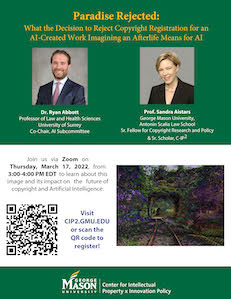
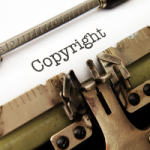 In one of his final majority opinions before announcing his retirement, Justice Steven Breyer penned a nuanced ruling that carefully threads the policy needle on copyright registration issues. The case pitted fabric designer Unicolors against fast fashion company H&M, but it was ultimately a victory for creators of art, fashion, music, dance, literary works, and others who rely on copyright registrations to protect their rights but lack the means to hire an attorney to ensure that their registration applications are legally and factually perfect. As a result of the ruling, they can register their works without fear that their registration could be invalidated by a good-faith mistake.
In one of his final majority opinions before announcing his retirement, Justice Steven Breyer penned a nuanced ruling that carefully threads the policy needle on copyright registration issues. The case pitted fabric designer Unicolors against fast fashion company H&M, but it was ultimately a victory for creators of art, fashion, music, dance, literary works, and others who rely on copyright registrations to protect their rights but lack the means to hire an attorney to ensure that their registration applications are legally and factually perfect. As a result of the ruling, they can register their works without fear that their registration could be invalidated by a good-faith mistake.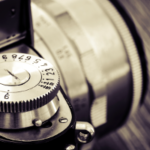 In a
In a 